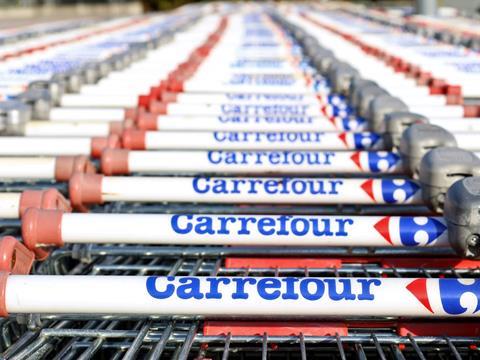
Carrefour, one of the largest grocery retailers in Europe, recently made headlines after it publicly criticized brands by putting shrinkflation price warnings on the packaging of various products. Charles Haverfield, CEO of U.S. Packaging and Wrapping, argues that brands should never resort to shrinkflation – not even as a last resort.
The sting of shrinkflation isn’t just being felt in Europe. A recent study found almost three-quarters of U.S. consumers were at least somewhat concerned about shrinkflation.
The latest U.S. inflation figures show consumer prices rose 3.7% in August, the second consecutive month of increases after a recent downward trend. Companies are under pressure, facing higher prices for their supplies and some are trying to pass that onto consumers in a phenomenon called shrinkflation.
Shrinking product sizes to boost profits is nothing new, but it does increase during periods of shortages and inflation. Despite the approach being legal, it has resulted in complaints and even lawsuits.
Some consumers say shrinkflation is a sneaky strategy because businesses use the same packaging but give customers less, arguing that it’s an attempt to deceive them.
It is worth noting product weight fluctuations do happen most of the time as brands carry out consumer research and modify product lines to increase sales and profitability. Many brands aren’t deliberately being sneaky just because their product downsizing is now tied to inflation, it’s something most do all the time.
There is also no obligation for companies to keep their products the same size or quantity just as there is no obligation for shoppers to buy the product. The question is, should manufacturers be more transparent with consumers when they shrink the size of their products?
It’s a part brand image and part moral issue, with companies having to decide how obvious they want to make new changes when they are not currently obliged to advertise them.
Some brands argue that as prices and sizes of items are clearly labeled, buyers are making informed decisions about their purchases. But with today’s fast-paced lifestyles, how many consumers really have the time to check the grammage of every item they are buying?
It is the consumer’s responsibility to check the pack before they buy, but communication with buyers from brands is key. It’s essential that if you’ve made changes to a product, you tell consumers you’ve done it. If you’re not defining an item fairly or accurately for what it is today, then that’s misleading.
I also think if more companies were openly apologetic from the start, consumers would be more understanding. For example, saying, ‘We’re sorry but we have no choice but to do this because our ingredients are now in short supply.’
Shrinkflation is a precarious choice and if you’re trying to persuade consumers to pay the same for less, they may decide to reject your brand for an alternative. Instead, producers should take a more strategic look at the product’s overall cost and prioritize lowering costs and enhancing efficiency without impacting value or quality.
A lot can be gained through innovation too. Offering a better-quality product might make consumers more willing to pay more for less of it. Alternatively, the use of lighter or more condensed packaging could lessen distribution costs.
If you liked this article, you might also enjoy:
The L’Oréal approach to packaging sustainability
What steps is Apple taking to make its packaging more sustainable?
How did Brazil achieve its 100% aluminium can recycling rate – and can it be replicated in the EU?
Experts have their say on the EU’s Packaging and Packaging Waste Directive revisions












No comments yet